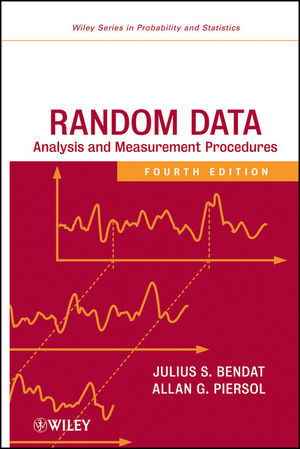

Most ebook files are in PDF format, so you can easily read them using various software such as Foxit Reader or directly on the Google Chrome browser.
Some ebook files are released by publishers in other formats such as .awz, .mobi, .epub, .fb2, etc. You may need to install specific software to read these formats on mobile/PC, such as Calibre.
Please read the tutorial at this link: https://ebookbell.com/faq
We offer FREE conversion to the popular formats you request; however, this may take some time. Therefore, right after payment, please email us, and we will try to provide the service as quickly as possible.
For some exceptional file formats or broken links (if any), please refrain from opening any disputes. Instead, email us first, and we will try to assist within a maximum of 6 hours.
EbookBell Team

4.0
46 reviewsFirst published in 1971, Random Data served as an authoritative book on the analysis of experimental physical data for engineering and scientific applications. This Fourth Edition features coverage of new developments in random data management and analysis procedures that are applicable to a broad range of applied fields, from the aerospace and automotive industries to oceanographic and biomedical research.
This new edition continues to maintain a balance of classic theory and novel techniques. The authors expand on the treatment of random data analysis theory, including derivations of key relationships in probability and random process theory. The book remains unique in its practical treatment of nonstationary data analysis and nonlinear system analysis, presenting the latest techniques on modern data acquisition, storage, conversion, and qualification of random data prior to its digital analysis. The Fourth Edition also includes:
Comprehensive and self-contained, Random Data, Fourth Edition is an indispensible book for courses on random data analysis theory and applications at the upper-undergraduate and graduate level. It is also an insightful reference for engineers and scientists who use statistical methods to investigate and solve problems with dynamic data.Content:
Chapter 1 Basic Descriptions and Properties (pages 1–24):
Chapter 2 Linear Physical Systems (pages 25–43):
Chapter 3 Probability Fundamentals (pages 45–78):
Chapter 4 Statistical Principles (pages 79–107):
Chapter 5 Stationary Random Processes (pages 109–171):
Chapter 6 Single?Input/Output Relationships (pages 173–199):
Chapter 7 Multiple?Input/Output Relationships (pages 201–247):
Chapter 8 Statistical Errors in Basic Estimates (pages 249–287):
Chapter 9 Statistical Errors in Advanced Estimates (pages 289–316):
Chapter 10 Data Acquisition and Processing (pages 317–357):
Chapter 11 Data Analysis (pages 359–416):
Chapter 12 Nonstationary Data Analysis (pages 417–472):
Chapter 13 The Hilbert Transform (pages 473–503):
Chapter 14 Nonlinear System Analysis (pages 505–526):